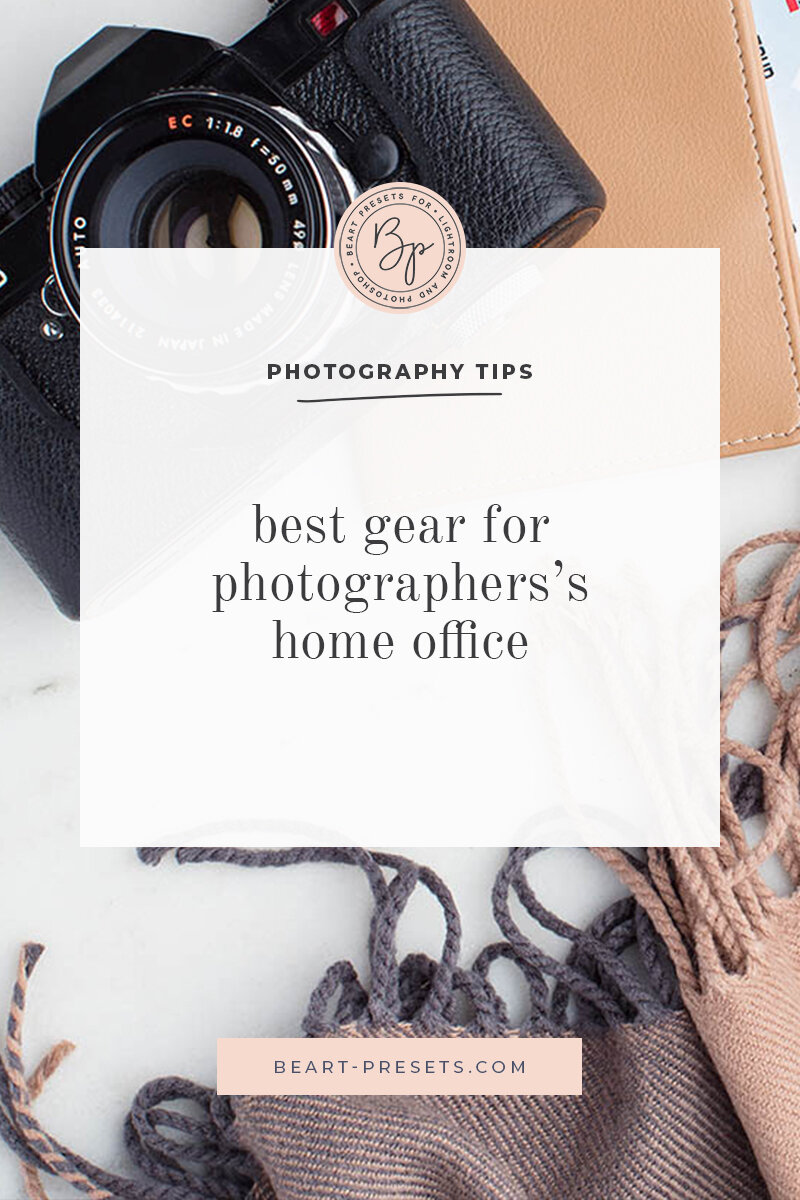Best Gear for a Photographer’s Home Office
For professional photographers, having a conducive working environment at home is an absolute must. After all, full-time photographers do much more than just go out to take pictures.
You also have to spend time on various desk tasks—from post-processing images and emailing clients, to organising files and managing your portfolio. So, in the same way, as you would invest in the best cameras, it's also worth making sure that your home equipment is just as reliable.When putting together your home office, here are some of the things to keep in mind.
Functional Work Desk
It's not uncommon for photographers to work on multiple screens, so it's only natural that you get a work desk wide enough to accommodate all your equipment. If you want to work comfortably, you'll want to ensure that your keyboard and mouse are parallel with your elbows. For this, you'll either need a desk with a keyboard tray underneath or a computer table with an elevated platform. This way, you also avoid unnecessary clutter that could get in the way of your workflow. If you want to work comfortably, you'll want to ensure that your keyboard and mouse (which you can upgrade to an ergonomic mouse) are parallel with your elbows.
Ergonomic Chair
Editing can sometimes take hours. As such, you should get a chair that can take the pressure off your back. In this regard, studies on Urdesign Magazine found that an ergonomic chair is great for productivity. While these chairs are already made to fit any body shape, it's still good practice to look for one that adjusts to your own body. Try to test it out before purchasing it, and see to it that each component—like arm width, height, and seat angle—are just right.
Dedicated Monitor
Laptops are good for makeshift screens, but their limited hardware may not be what you need to see your images in detail. For your home office, you'll want a dedicated monitor. For instance, The Guardian's article on screen sizes informs that the average laptop only contains 1366 to 1920 pixels along the long edge, while an ordinary monitor has 4000 pixels or a little less. Look into investing in a big monitor, ideally around 27 to 34 inches, so that you can see your images much more clearly.
Scanner
Photographers who shoot with film typically use scanners. Nonetheless, it's still great to have one in case you need to digitise any negatives. A depth of 24-bits should be enough for quality scans. However, you can also opt for a 30-bit scanner if you want the best quality possible. You'll also have to determine how much dots per inch (dpi) the machine can process so that images are digitised without decreasing their quality. For instance, an 8x10 inch photo needs to be scanned at 2000 dpi or higher. Dips can go as high as 6400 for the more expensive models, so it's important to consider the size of the photos you normally scan before choosing.
Coloured Printer
Pictures can vary on screen versus when they're developed. So, a good printer is the key to see the difference. According to HP's guide to the best office tools, smart printers come highly recommended if you want to ensure the quality of your photos. With these printers boasting wireless capabilities, you can even print from anywhere in your home. Fortunately, home office printers don't have to be bulky or take up too much space. Compact models that offer mobile printing are excellent options for smaller spaces. Whichever option you're going for, it's the quality of the printer that matters. So remember to test-print before buying.
Hard Drives
RAW files consume a lot of space, which is why it's essential to have multiple hard drives to store all your work in. Remember to label the contents of every hard drive (by event and year) to keep them organised. As a safety precaution, HD Pro recommends adopting the 3-2-1 Backup Rule. This means that you should always have three copies of your files: two locally (which is where multiple and labeled hard drives come in) and one off-site.
Photography Gear Storage
Every shoot needs a different camera setup, and it'll be easier to find the right components if you have proper storage for them. This could be anything from an open cabinet or a storage box to a walk-in closet—as long as it's big enough to hold everything in one place.
Plus, as we've previously discussed on BéArt-Presets, there's no better time than now to sort out your gear. With most of your time spent at home self-isolating, you can make the most of it by cataloging your inventory, cleaning your equipment, and checking to see if there's anything that needs replacing.
With all that being said, working at home doesn't have to be a chore. And by making sure you have the right tools and optimal space, productivity should flow naturally. The proper home office setup might be a significant investment, but it's one that will pay off in the short and long run.
Author's Bio
Tia Jones is a freelance photographer who focuses on events and travel. Her favorite things to capture in her spare time include landscapes and her loyal pet retriever.





















